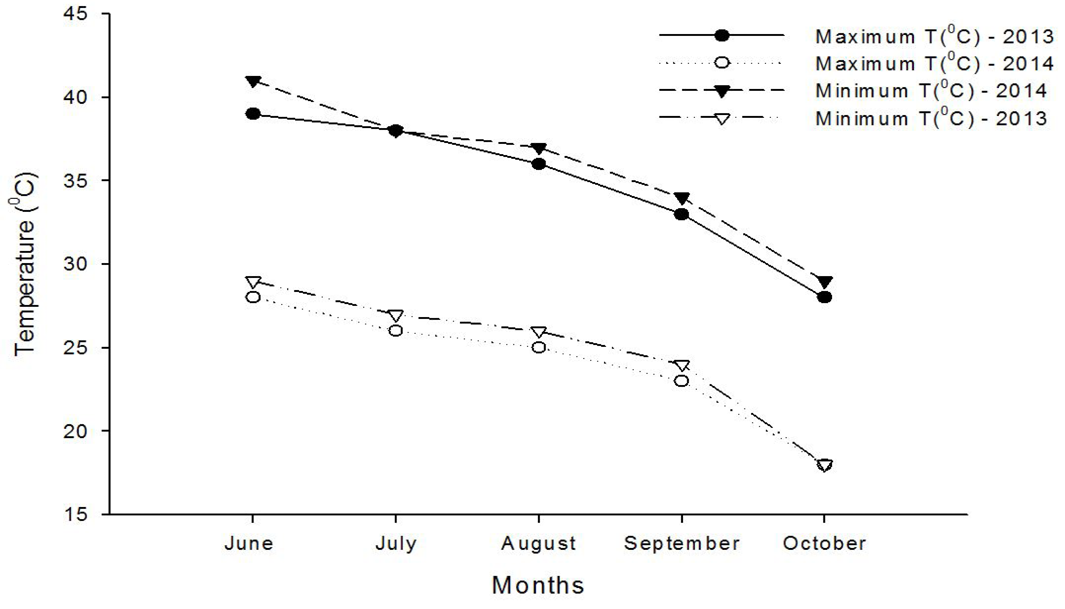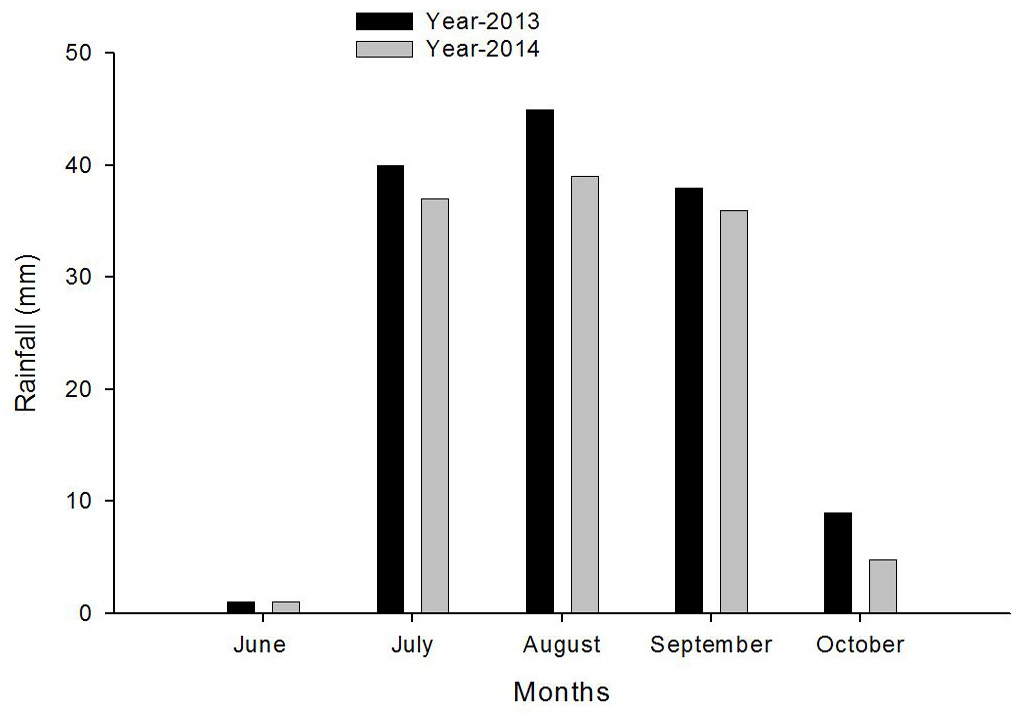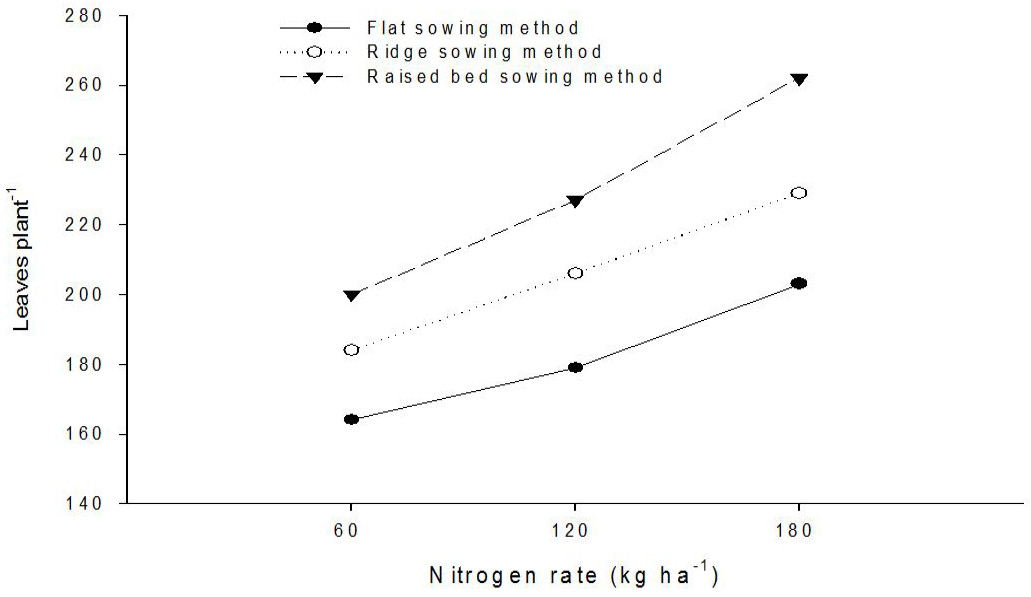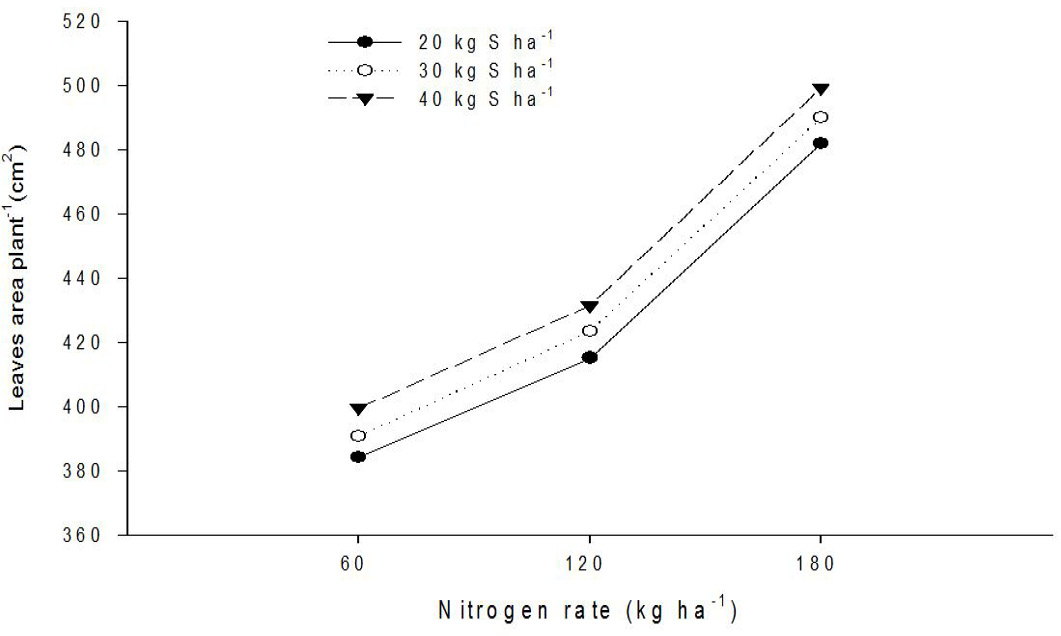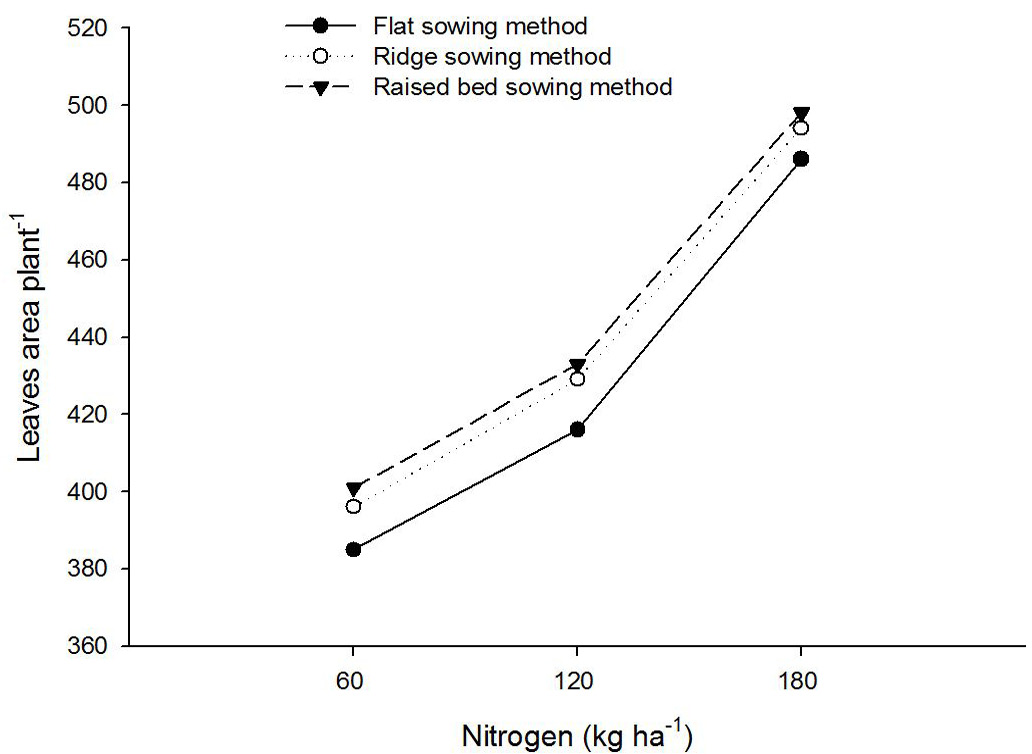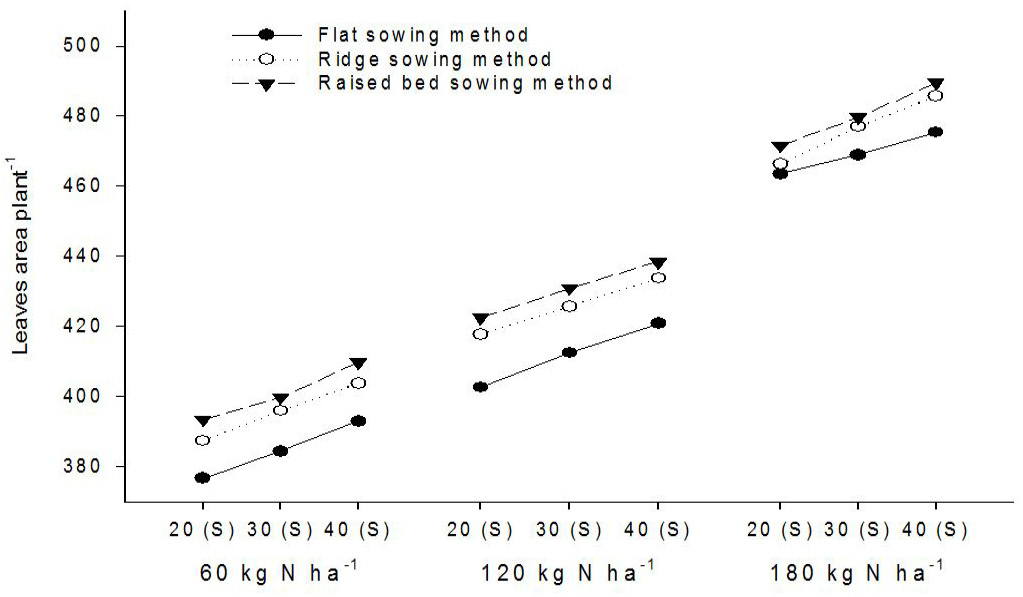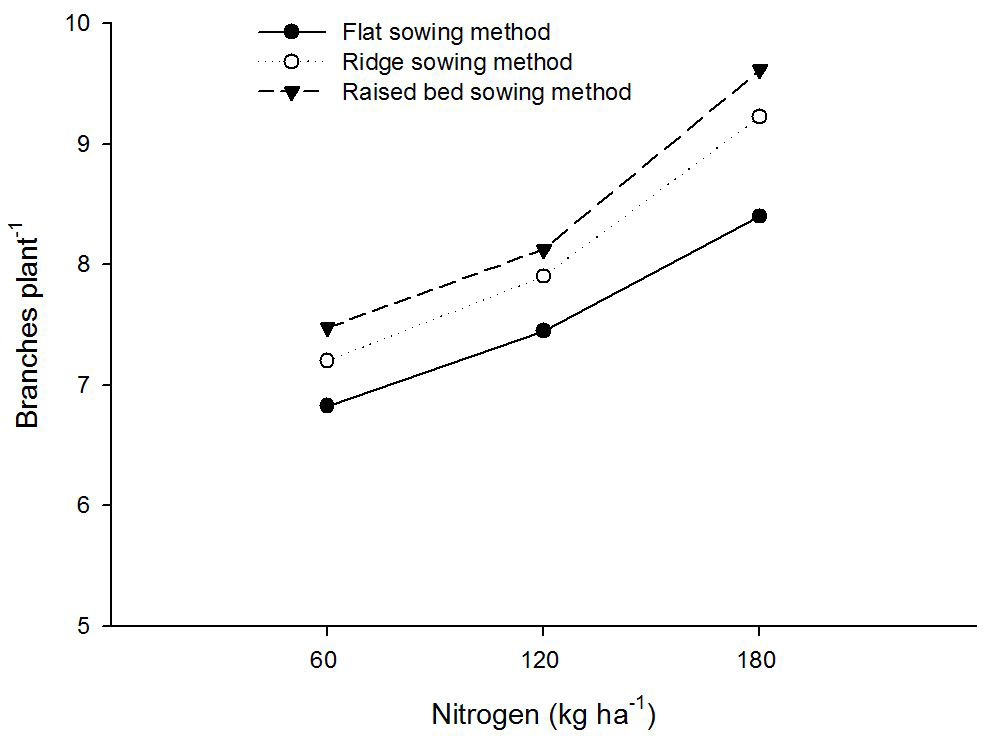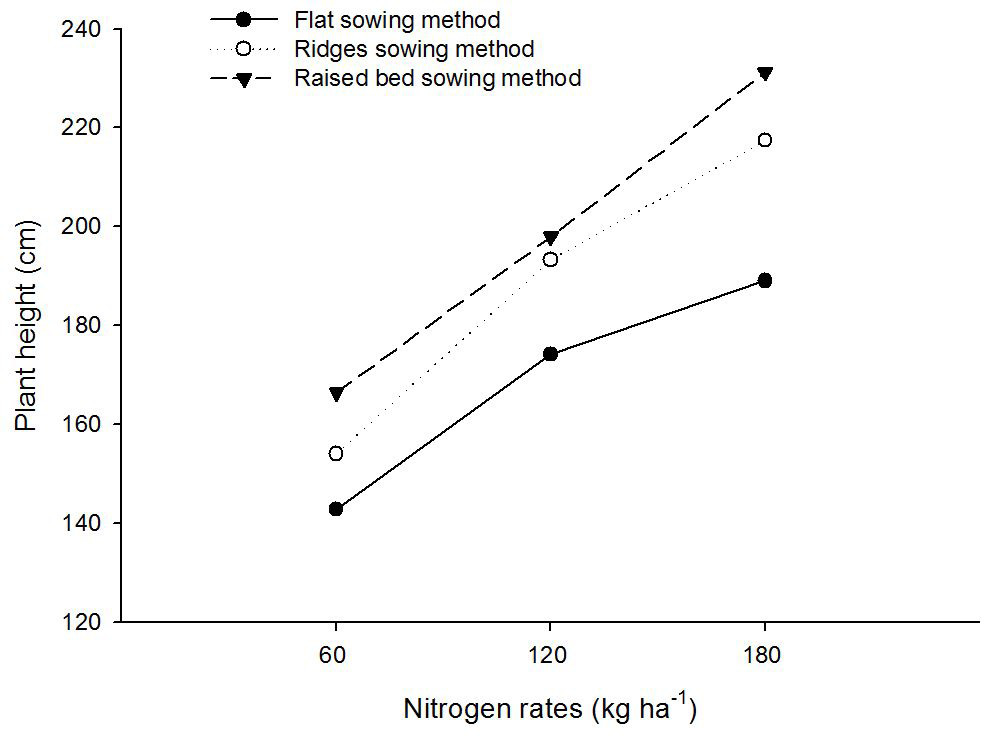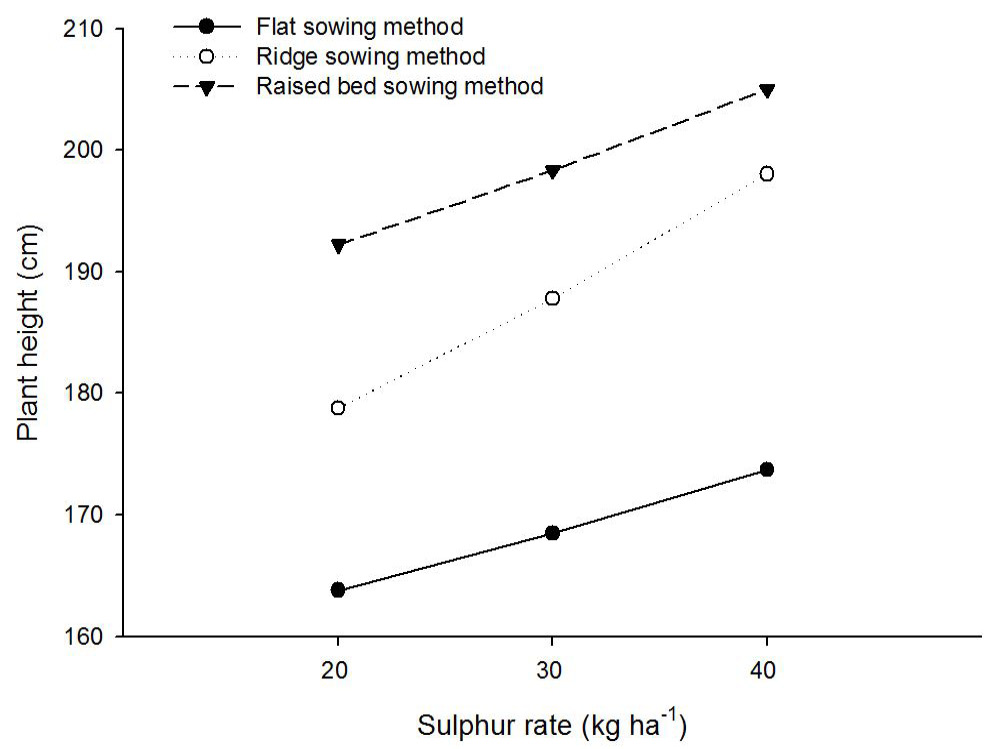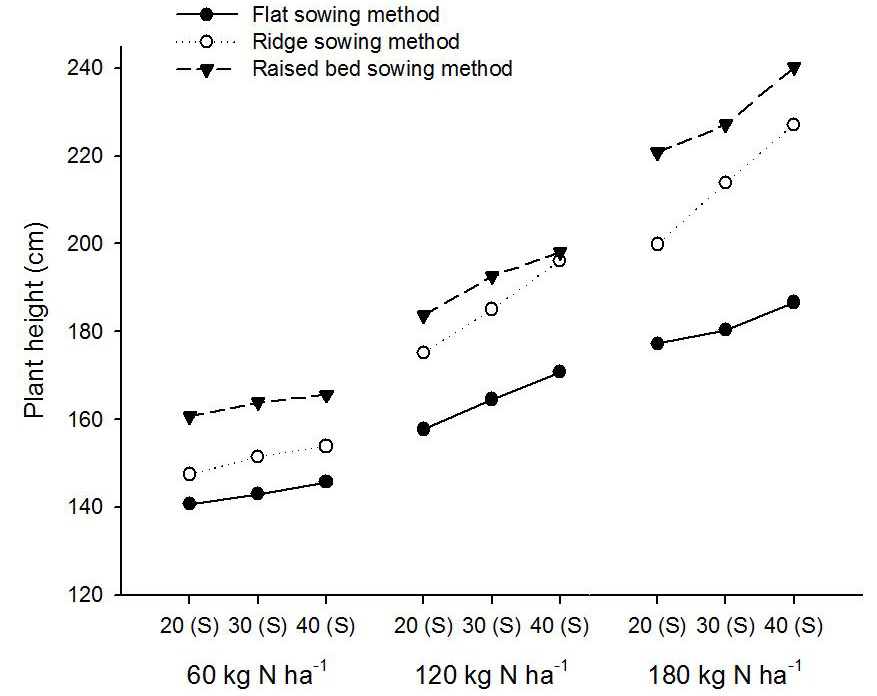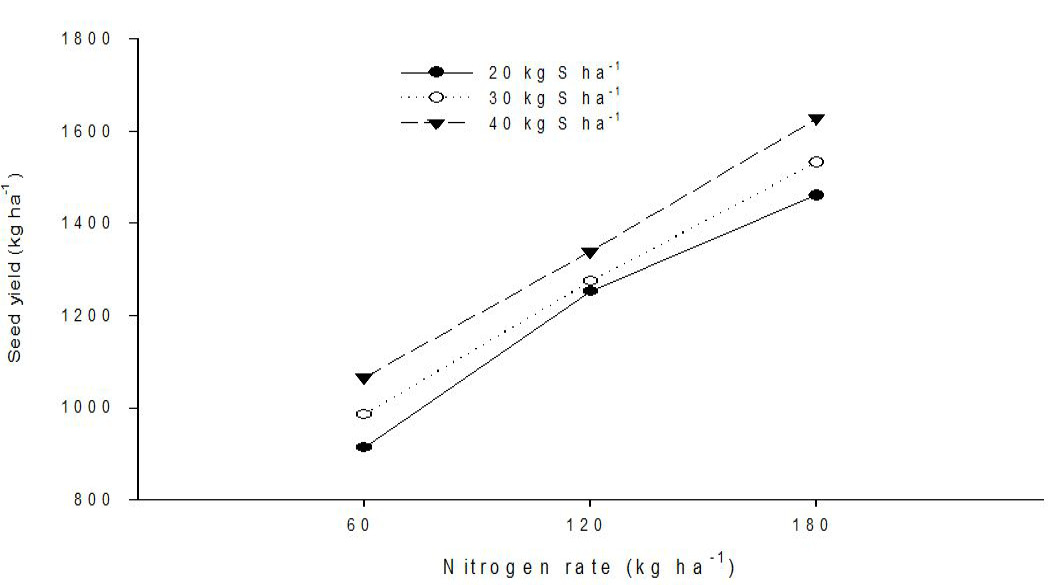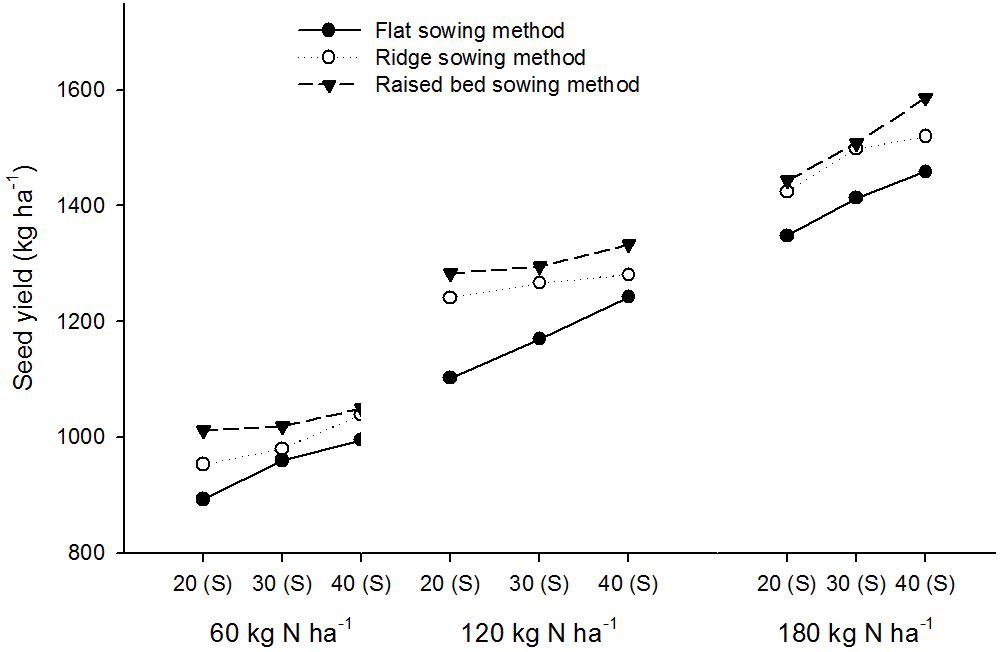Response of Sesame (Sesamum indicum L.) to Sowing Methods, Nitrogen and Sulphur Levels
Response of Sesame (Sesamum indicum L.) to Sowing Methods, Nitrogen and Sulphur Levels
Alam Zeb* and Amanullah Jan
Monthly maximum and minimum temperature (0C) data during sesame growing season of year 2013 and 2014 at experimental site.
Monthly rainfall (mm) data during sesame growing season of 2013 and 2014 (June to October) at experimental site.
Interaction between (NxSM) for days to 1eave plant-1 of sesame.
Interaction between (SxN) fertilizers for leaves area plant-1 of sesame.
Interaction between nitrogen and sowing methods for leaves area plant-1.
Interaction between sowing methods, nitrogen and sulfur fertilizers leave area plant-1 of sesam.
Interaction between (NxS) fertilizers for branches plant-1 of sesame.
Interaction between nitrogen and sulphur fertilizers for plant height of sesame.
Interaction between nitrogen and sowing methods for plant height of sesame.
Interaction between sulphur and sowing methods for plant height of sesame.
Interaction between sowing methods, nitrogen and sulfur for plant height of sesame.
Interaction between nitrogen and sulfur fertilizers for seed yield of sesame.
Interaction sowing methods, between nitrogen and sulfur fertilizers for sesame seed yield.





